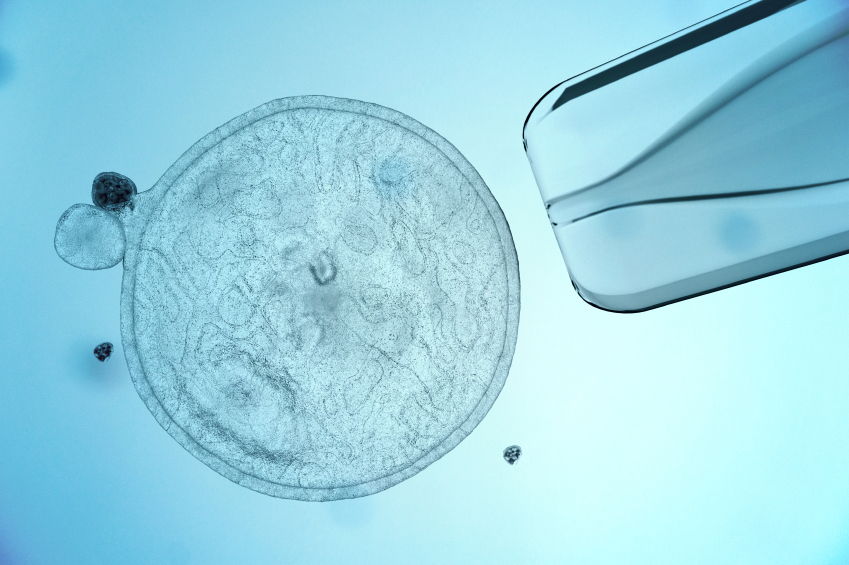Regenerative therapy using stem cells holds great hope for millions of patients with degenerative diseases or injuries. Repair of damaged organs or tissues using stem cells could address the needs of the patient.
Beyond the emotion caused by the false hopes, it is imperative that a complete review of the scientific results and promises clarifies the debate.
Stem cell characteristics
A stem cell has two chief characteristics: it continues to proliferate so that a pool of cells is always available and it responds to appropriate signals by differentiating into one or several specialized cell types. The sources of human stem cells are varied: they can come from early embryos (from 5-7 day post-conception), foetal tissue, blood and umbilical cord matrix, placental tissues and from most of body tissues. Adult stem cells come from post-natal sources. The plasticity of a stem cell, in other words its ability to form differentiated cell types ranges from unipotent (able to form only one differentiated type), to multipotent (able to form multiple cell types), to pluripotent (able to form most of all tissues of the adult body) to totipotent (able to form all postnatal or extraembryonic tissues, potentially able to regenerate a complete new embryo).
Embryonic stem cells
Mouse embryonic stem (ES) cells were first grown in culture in 1981, but human ES cells were not successfully cultured until 1998. Isolation of embryonic stem cells requires the disaggregation of the early embryo, hence the ethical debate regarding these cells. These stem cells, considered the archetypal pluripotent stem cell, they are capable to form any type of tissues, have to face many scientific hurdles to overcome before they might be used clinically, specifically tumour formation and immune rejection. In order to overcome potential rejection of ES cells, various solutions have been proposed, including establishing “banks” of ES cell lines to match potential recipients, but we do not know the number of stem cells needed to match all the patients (undoubtedly from 250 to 10 000 lines). Therapeutic cloning has been hailed as a potential panacea for overcoming immune rejection. But, and this, despite the fraudulent claim from Korean researchers, at this point no human cloning have been successful; In a previous experiment in mice, the cells from cloned embryos were rejected by the genetically matched host.
Adult stem cells
Recent researches showed remarkable flexibility of adult stem cells. Evidence was presented that a single adult bone marrow stem cell could contribute not only to marrow and blood but also to formation of liver, lung, digestive tract, skin, heart, and muscle2. Several examples now exist of some adult stem cells with pluripotent flexibility, including cells from bone marrow, peripheral blood, the inner ear, umbilical cord blood, nasal mucosa, amniotic fluid, and the placental amniotic membrane. Many of these published studies also document that these particular pluripotent adult stem cells can multiply in culture for extensive periods of time while still retaining their ability to differentiate and providing sufficient numbers of cells for clinical treatments.
There have been numerous reports of the effectiveness of adult stem cells in treating animal models of disease.
In some experiments, the cells showed a “homing” ability to the site of tissue damage. For spinal cord injury, adult stem cells have promoted neuronal growth and therapeutic benefit in rodent models.
In animal models of Parkinson’s disease, adult stem cells have shown effectiveness at stimulating dopamine secretion and decreasing behavioural symptoms. One patient received a transplant of his own neural stem cells, resulting in decreasing the symptoms of Parkinson’s disease. Regarding diabetes, several examples now exist showing generation of insulin-secreting cells from adult stem cells, including the liver, bone marrow, and pancreas.
Adult stem cells have also been used in bone repair protocols.
Repair of cardiac damage in patients has also moved to the clinical trials stage, with several reports of early success in repair of infarct damage.
Even if the mechanism for these regenerative results is still unclear, the flexibility and the enormous potential of adult stem cells are now shown.
1. Current Science of Regenerative Medicine with Stem Cells, David A. Prentice, Journal of Investigative Medicine, vol. 54 number 1, January 2006.
2. Multi-organ, multi-lineage engraftment by a single bone marrow-derived stem cell, Krause DS, Theise ND, Collector MI et al. Cell 2001 ; 105 ; 369-77.

